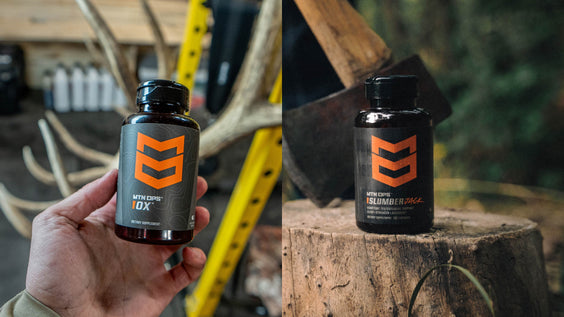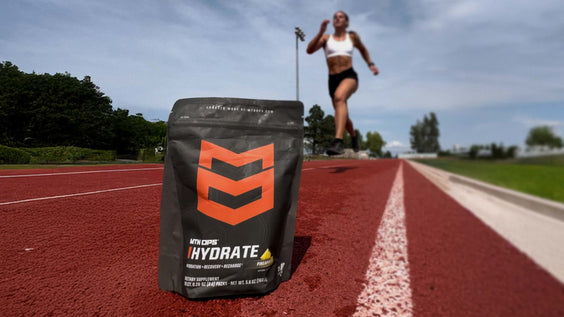

Top Ways to Avoid Injury While Exercising
Jun 18, 2024
By Truett Hanes
There is nothing worse than your training regiment being derailed because of an injury, especially an avoidable one. The time ypu spend getting back to where you were could've been time spent progressing. Here's a few different ways to help mitigate this possibility and to help keep you as healthy as possible:
1. Use Proper Form and Technique
- Learn Correct Techniques: Whether you are lifting weights, using machines, or doing bodyweight exercises, ensure you know the correct form and technique. This often involves keeping a neutral spine, avoiding excessive joint strain, and moving through a full range of motion. This is a no-brainer, but when we're pressed on time or trying to hurry through a workout this can happen more than we'd think. Don't rush your workouts or you'll be forced to deal with the consequences.
- Professional Guidance: If you are unsure about the correct form, seek guidance from a personal trainer or a reliable online source. Luckily, all your workouts questions are, more often than not, answered online with a video tutorial of how to do a certain movement. Check these options out and familiarize yourself before engaging in a new workout.
2. Gradually Increase Intensity
- Progress Slowly: Avoid jumping into high-intensity workouts or heavy lifting without proper preparation. Gradually increase the weight, intensity, and duration of your workouts to allow your body to adapt. We've said this before and we'll say it again, you must lift light weight before lifting heavy weights. Whether that means you must warm-up with lighter weights before then training with your actual workout weight or if it means you do your entire workout with light weights now and gradually increase to more and more weight, the point remains the same: it takes time. It takes time to build strength and it takes time to warmup your muscles so give yourself grace and trust the plan.
- Follow a Program: Use a structured workout program that progressively increases in difficulty. This helps in avoiding sudden spikes in intensity that can lead to injury. Again, there are thousands of programs out there that are goal-oriented and can give you what you want as long as you follow them. Don't guess if you aren't sure, especially if it's with moves you aren't familiar with.
3. Warm Up and Cool Down
- Warm Up: Spend at least 5-10 minutes warming up before starting your main workout. This can include light cardio, dynamic stretching, and mobility exercises to increase blood flow and prepare your muscles and joints. It doesn't have to be complicated, even walking for 5-10 minutes can be beneficial in warming up your body for the workout you're about to do. Don't neglect the small things or they can become big issues.
- Cool Down: After your workout, take time to cool down with static stretching and light cardio to help reduce muscle stiffness and improve recovery. A shakeout jog or walk can do wonders in keeping your body loose and fighting off lactic acid build up. Soreness is good to know you had a productive workout, but it will hinder your ability to workout the next day. Stay loose after your workouts and do the work necessary to put your best foot forward the next day.
4. Proper Supplementation
- Supplement Before: There's no reason you should go into a workout tired and not feeling up to the challenge physically. Of course there's a level of fighting through the fatigue if you're up early before work or up later after work, but there are many ways to get yourself ready and in the proper mindset, this can happen with proper supplements. Whether you need a lot of help getting ready for a workout, Yeti Mode, or you want a non-caffeinated boost of energy, Enduro, or you want the itchiness + the non-caffeinated energy boost with our new Non Caffeinated Stack.. then we have options for you. Sometimes all you need is a little boost to get your edge back and into the proper mindset for a full workout. If you aren't ready mentally, then often you won't be ready physically and that's where you can run into injury if you're not careful.
- Supplement After: Recovery Reimagined. Using proper supplementation after a workout is key in ensuring you'll feel your best for the next morning when you wake up. Utilizing a recovery protein shake, Magnum, or taking advantage of our BCAA's for supreme muscle recovery is just two ways to ensure your body will be that much better for the tests that lay ahead for the rest of the week. You don't have to be sore for days and hardly able to walk, but there's steps you can take to mitigate recovery time and focus on building towards your goals.
5. Listen to Your Body and Avoid Overtraining
- Rest and Recovery: Allow sufficient time for muscle recovery by incorporating rest days into your workout routine. Overtraining can lead to fatigue and increase the risk of injuries. Make the call if a rest day is needed in your routine or if you simply just need to take it easier on a certain day of the week to gather yourself for the upcoming training days. A great way of increasing your recovery that's often overlooked is sleep. Sleep is pivotal for building muscle and being sharper mentally. You need both if you're trying to become better in the gym and in your personal life. Don't overlook the importance of sleep, especially if your training routine has recently gotten tougher.
By following these tips, you can significantly reduce your risk of injury in the gym, ensuring a safer and more effective workout experience. Remember, instead of trying to get healthy because you got injured from an avoidable issue, you can instead be building and progressing in that time towards a happier, healthier and stronger you. Take care of yourself and follow these steps to avoid setting yourself back.

















































